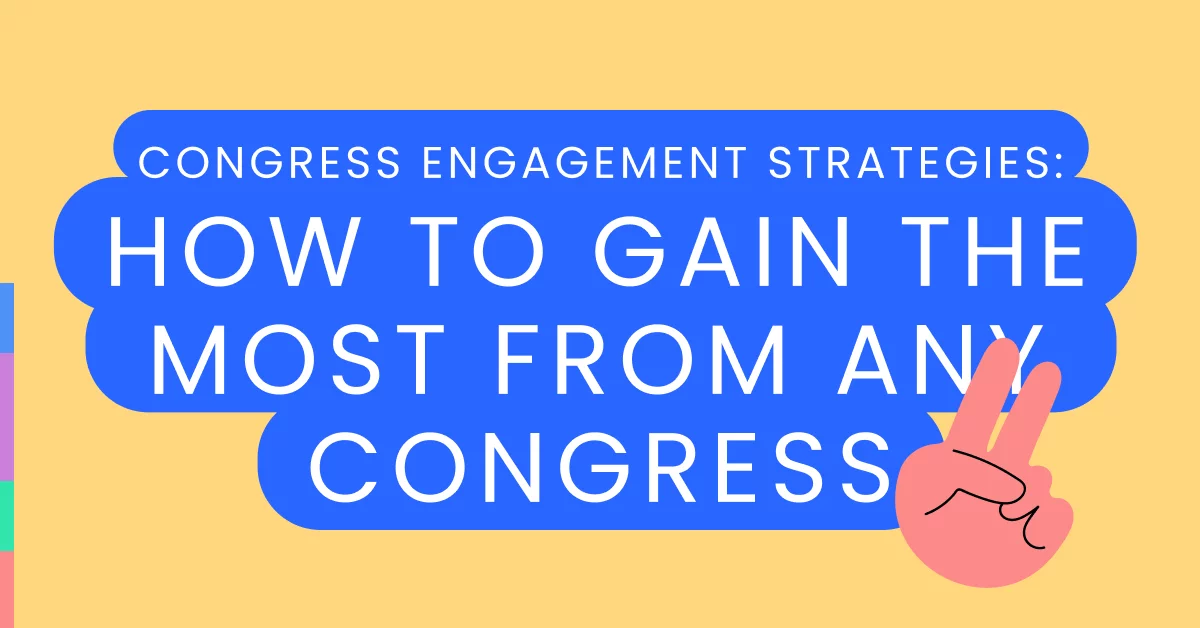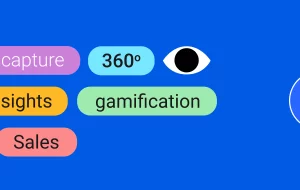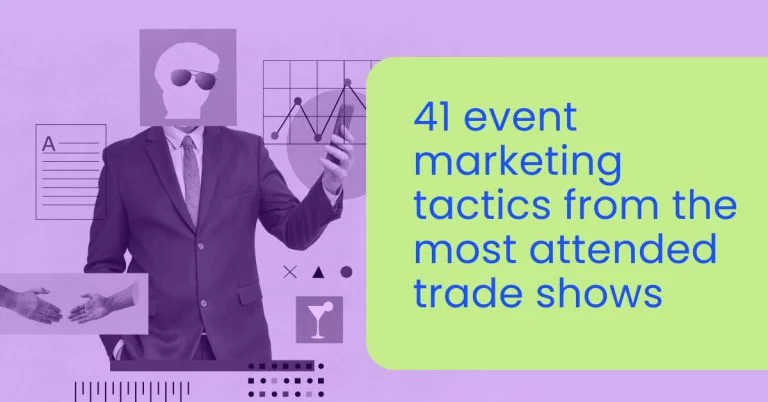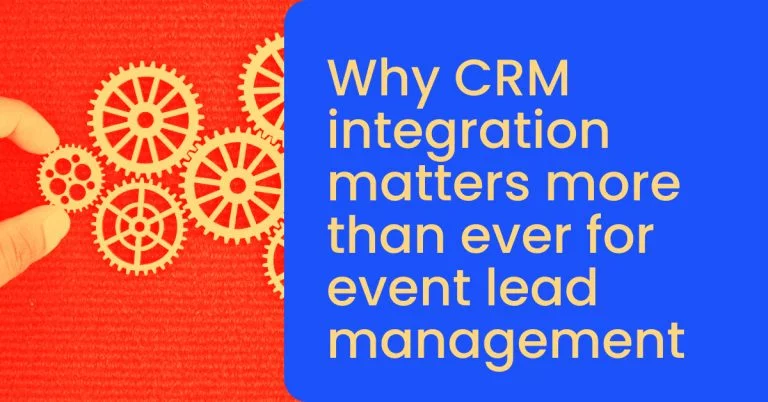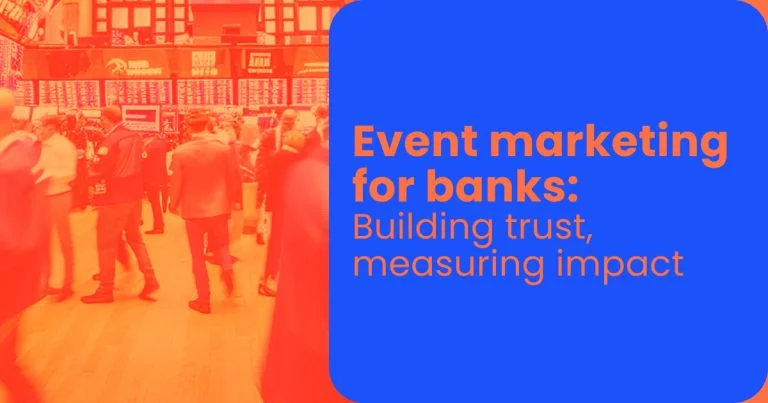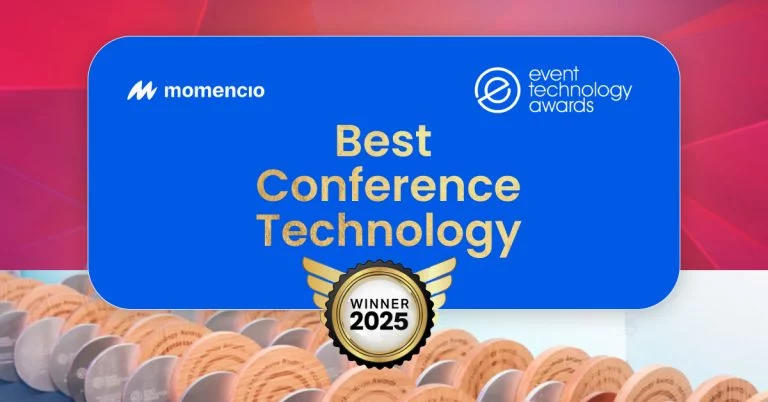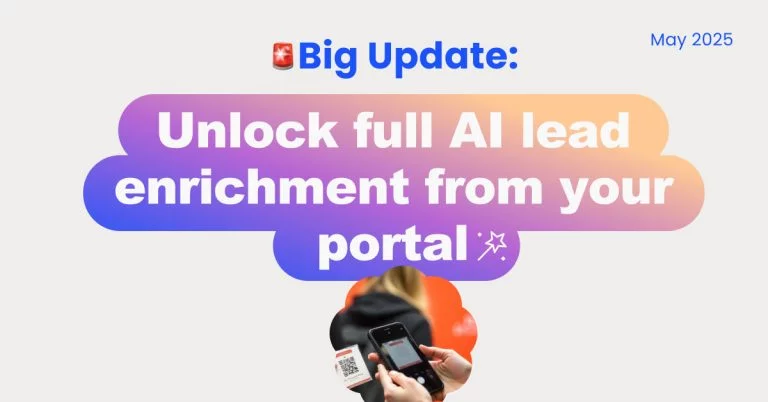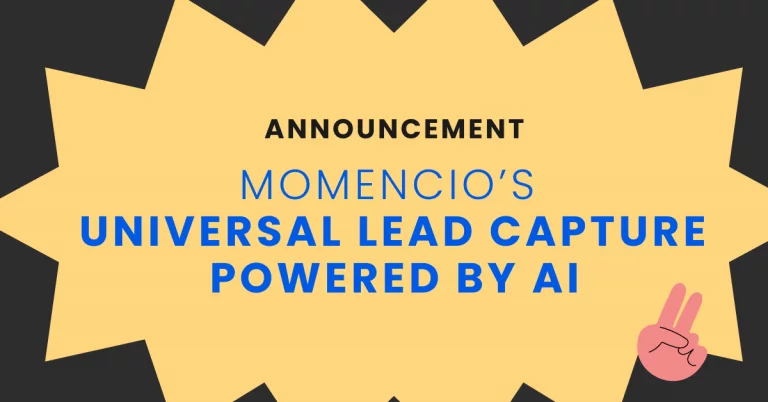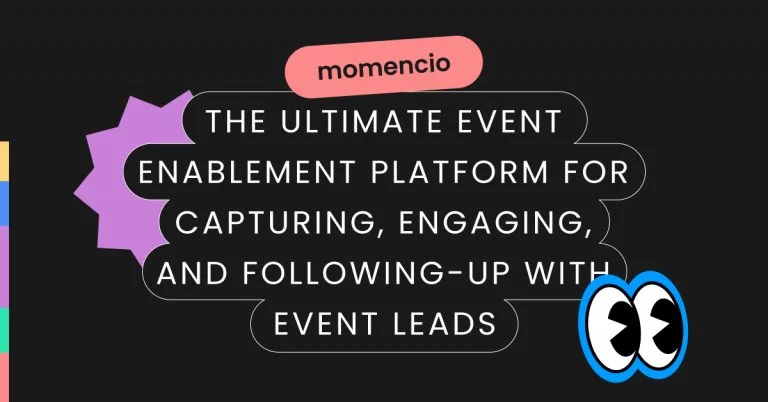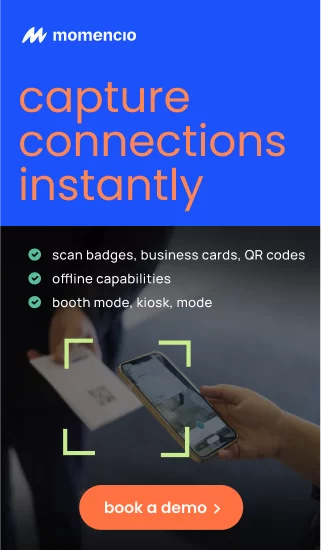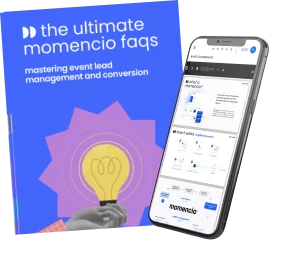Congress Engagement Strategies: How to Gain the Most from Any Congress
Maximizing your presence at a congress isn’t just about showing up; it’s about strategically planning every step, from preparation to post-event follow-up. A well-executed plan can significantly enhance your brand’s visibility, generate valuable leads, and ultimately convert those leads into sales. According to a report by Bizzabo, 41% of marketers believe that events are the single most effective marketing channel over digital advertising, email marketing, and content marketing. This statistic underscores the importance of adopting comprehensive strategies to make the most out of every congress.
Event professionals who excel in congress engagement strategies know that success starts long before the event begins and continues well after it ends. Adequate preparation, engaging on-site interactions, and robust post-event follow-ups are critical components of a successful congress strategy. These elements not only help capture leads but also nurture and convert them into loyal customers. This article provides a detailed guide on how to prepare effectively, engage meaningfully on-site, and follow up strategically to ensure you gain the most from any congress.
How to Prepare Effectively for Congresses
Effective preparation for a congress lays the foundation for success. By setting clear goals, researching attendees and speakers, planning your schedule meticulously, and creating engaging materials, you can ensure that your congress experience is productive and impactful.
Setting Clear Goals
Before attending any congress, it’s crucial to set clear, measurable goals. These goals should align with your overall business objectives and include increasing brand awareness, generating a specific number of leads, or securing partnerships. Define your key performance indicators (KPIs) to track your progress and success during and after the event. Clear goals provide direction and help you focus your efforts on activities that yield the highest returns.
Example Goals:
- Increase brand awareness by engaging with at least 100 attendees.
- Generate 50 high-quality leads for follow-up.
- Secure five partnerships with complementary businesses.
Researching Attendees and Speakers
Understanding who will be attending and speaking at the congress can provide valuable insights into networking opportunities. Use the event’s attendee list, social media channels, and event apps to research key individuals and companies. Identify potential prospects and prepare personalized engagement strategies to connect with them effectively.
Tips for Researching:
- Review the attendee list and highlight key contacts.
- Follow speakers and attendees on social media to engage with their content.
- Join event-related groups and forums to stay updated on discussions and opportunities.
Planning Your Schedule
A well-organized schedule is essential for maximizing your time at the congress. Prioritize sessions, workshops, and networking events that align with your goals. Scheduling meetings with potential leads or partners in advance can ensure that you make the most of your time on the event floor. Utilize the congress app or website to plan your itinerary and set reminders for important sessions and meetings.
Scheduling Tips:
- Block out time for keynotes and must-attend sessions.
- Allocate time for networking breaks and informal meetings.
- Schedule follow-up meetings immediately after significant interactions.
Creating Engaging Materials
Your marketing materials should be designed to capture attention and convey your value proposition quickly. Invest in high-quality brochures, business cards, and digital presentations. Incorporate interactive elements like QR codes that lead to personalized landing pages, providing additional information and capturing lead details. Ensure that all materials are aligned with your brand identity and messaging.
Effective Materials:
- High-quality brochures and business cards with clear contact information.
- Digital presentations that highlight your products or services.
- Interactive elements such as QR codes lead to personalized landing pages.
Examples:
- Brochures: Design visually appealing brochures that highlight your company’s unique selling points and services.
- Business Cards: Ensure your business cards are professional and include essential contact information and a QR code for easy follow-up.
- Digital Presentations: Prepare engaging presentations that can be used during face-to-face interactions to explain your offerings comprehensively.
By setting clear goals, thoroughly researching attendees and speakers, meticulously planning your schedule, and creating engaging materials, you position yourself for success at any congress. These preparatory steps ensure that you make meaningful connections, gather valuable leads, and lay the groundwork for effective post-event follow-up and sales conversion.
What Are the Best On-Site Engagement Strategies?
On-site engagement is where your preparation efforts come to fruition. Engaging effectively with attendees at the congress can significantly impact your brand’s visibility and lead-generation efforts. Here’s how to make the most of your time on the event floor.
How to Set Up a Visually Appealing Booth
Your booth is your primary engagement hub. It should be visually appealing, aligned with your brand identity, and designed to attract attendees. A well-designed booth not only draws people in but also creates a memorable impression.
Booth Setup Tips:
- Eye-Catching Graphics: Use large, high-quality images and clear signage to attract attention from afar.
- Clear Branding: Ensure that your company logo and key messages are prominently displayed.
- Interactive Elements: Incorporate touchscreens, VR experiences, or product demos to engage attendees.
- Open Layout: Design an open and inviting layout that encourages visitors to enter and interact.
Example:
Interactive Product Demo Area: Set up a section where attendees can interact with your products or services hands-on. This could include live demonstrations, VR experiences, or touchscreens that showcase your offerings in an engaging way.
What Makes Interactive Presentations and Demos Effective?
Live presentations and product demos are powerful tools for drawing in attendees and conveying your value proposition. Tailor your presentations to address the specific needs and interests of your audience, making them relatable and memorable.
Presentation Tips:
- Storytelling: Use storytelling techniques to make your presentations engaging. Share real-world examples and case studies that illustrate the benefits of your products or services.
- Visual Aids: Utilize visuals such as slides, videos, and infographics to enhance your message.
- Audience Interaction: Encourage questions and participation from the audience to keep them engaged.
- Clear Call to Action: End your presentation with a clear call to action, such as visiting your booth for more information or scheduling a follow-up meeting.
Example:
Engaging Product Demo: Conduct live product demos that showcase the features and benefits of your offerings. Use real-life scenarios to demonstrate how your product solves common problems faced by attendees.
Networking Tips and Tricks
Effective networking is about building meaningful connections rather than simply collecting business cards. Focus on engaging in genuine conversations, listening actively, and following up on discussions with personalized messages.
Networking Strategies:
- Active Listening: Show genuine interest in the people you meet. Ask open-ended questions and listen to their responses.
- Personalized Follow-Up: After the event, send personalized messages referencing your conversation. This helps reinforce the connection and keeps you at the top of your mind.
- Social Media Engagement: Connect with new contacts on social media platforms like LinkedIn. Engage with their posts and share relevant content to continue the conversation.
Example:
Social Media Engagement: After meeting a potential lead, connect with them on LinkedIn and send a personalized message referencing your conversation. Share relevant content that aligns with their interests to keep the relationship active.
Utilizing Technology for Engagement
Leveraging event technology can enhance your engagement efforts and streamline lead capture. Use mobile apps, lead capture tools, and real-time analytics to track interactions and gather valuable data.
Technology Tips:
- Mobile Apps: Utilize the congress app to manage your schedule, track attendees, and connect with prospects.
- Lead Capture Tools: Use tools like badge scanners or mobile apps to capture and categorize lead information quickly.
- Real-Time Analytics: Monitor your booth traffic and engagement metrics in real time to adjust your strategies as needed.
Example:
Lead Capture App: Use a lead capture app to scan attendee badges. The app instantly captures the attendees’ contact information and categorizes the leads based on their interests and interactions.
By focusing on visually appealing booth setups, engaging presentations and demos, effective networking, and leveraging technology, you can maximize your on-site engagement and create a lasting impression on attendees. These strategies ensure that you capture high-quality leads and set the stage for successful post-event follow-up and sales conversion.
What Are the Best Post-Event Follow-Up Tactics?
Post-event follow-up is crucial for converting the leads you gathered during the congress into tangible business opportunities. Effective follow-up strategies ensure that you stay connected with your leads, nurture relationships, and ultimately drive sales.
Collecting and Organizing Leads
Immediately after the event, consolidate all the leads you’ve collected. Use CRM tools to input lead details, categorize them based on interest and potential, and prioritize follow-ups. This organization ensures that your follow-up efforts are efficient and targeted.
Tips for Collecting and Organizing Leads:
- Centralized Database: A CRM system is used to store all lead information in one place.
- Lead Categorization: Categorize leads based on criteria such as engagement level, potential value, and specific interests.
- Prioritization: Prioritize leads to ensure that the most promising prospects are followed up with first.
Example:
CRM Integration: Integrate your lead capture tools with your CRM system to automatically import and organize lead information, making it easy to track and manage follow-ups.
How to Personalize Follow-Up Emails
Personalized follow-up emails can significantly increase your response rates. Reference specific conversations, sessions, or demos that the lead attended. Provide additional resources or answers to questions they raised. Tools like momencio can automate and personalize these follow-ups, making them more effective.
Email Personalization Tips:
- Personalized Subject Lines: Use the lead’s name and reference the congress to capture their attention.
- Specific References: Mention specific interactions or sessions to show that you remember your conversation.
- Valuable Content: Provide additional resources, such as whitepapers, case studies, or links to relevant content on your website.
- Clear Call to Action: Include a clear call to action, such as scheduling a meeting or signing up for a webinar.
Example:
Follow-Up Email Template
Subject: Great to Meet You at [Congress Name], [Lead’s Name]!
Hi [Lead’s Name], It was a pleasure meeting you at [Congress Name] and discussing [specific topic]. As promised, here’s the [resource] I mentioned. [Link to resource] I would love to continue our conversation and explore how [Your Company] can help you with [specific need or challenge]. Are you available for a quick call next week? Looking forward to connecting. Best regards,[Your Name]
Leveraging Social Media Connections
Connect with your leads on social media platforms like LinkedIn. Share relevant content, engage with their posts, and participate in discussions. This continuous engagement helps keep your brand top-of-mind and builds a stronger relationship with potential clients.
Social Media Engagement Tips:
- Connect on LinkedIn: Send personalized connection requests to leads you met at the congress.
- Share Relevant Content: Post content that aligns with the interests and needs of your leads.
- Engage with Posts: Like, comment, and share your leads’ posts to stay engaged and build rapport.
- Join Relevant Groups: Participate in LinkedIn groups related to your industry to expand your network and engage with potential leads.
Example:
LinkedIn Connection Request
Hi [Lead’s Name], It was great meeting you at [Congress Name], and I enjoyed our conversation about [specific topic]. I’d love to connect on LinkedIn to keep in touch and continue our discussion. Best,[Your Name]
Hosting Post-Event Webinars or Q&A Sessions
Hosting a post-event webinar or Q&A session can provide value to your leads and keep them engaged. Recap key points from the congress, address common questions, and offer deeper insights into your products or services. Promote these sessions through your follow-up emails and social media channels.
Webinar Tips:
- Relevant Topics: Choose topics that are relevant to the interests and needs of your leads.
- Engaging Content: Use interactive elements like polls, Q&A sessions, and live demos to keep attendees engaged.
- Promotion: Promote the webinar through email campaigns and social media posts to maximize attendance.
- Follow-Up: Send follow-up emails to webinar attendees with a recording of the session and additional resources.
Example:
Webinar Invitation Email
Subject: Join Our Exclusive Post-[Congress Name] Webinar
Hi [Lead’s Name], Following our great conversation at [Congress Name], I’m excited to invite you to an exclusive webinar where we’ll dive deeper into [specific topic]. Date: [Date]Time: [Time]Registration Link: [Link] We’ll be covering key insights from the congress and exploring how [Your Company] can help you achieve [specific goal]. There will also be a Q&A session where you can get your questions answered. Looking forward to seeing you there! Best regards,[Your Name]
By effectively collecting and organizing leads, personalizing follow-up emails, leveraging social media connections, and hosting engaging post-event webinars, you can maximize the potential of your post-event follow-up efforts. These strategies help maintain engagement with your leads, build stronger relationships, and drive them further down the sales funnel.
How to Pass Leads to Sales Effectively
Transitioning leads from marketing to sales is a critical step in the lead management process. Ensuring a seamless handover can significantly improve conversion rates and drive sales growth. Here are the best practices for effectively passing leads to your sales team.
Integrating CRM Systems
Integrating your CRM with your lead capture tools ensures that all lead information is centralized and accessible to your sales team. This integration allows for seamless data transfer and better collaboration between your marketing and sales departments.
CRM Integration Tips:
- Automated Data Transfer: To ensure real-time updates, set up automated data transfer from lead capture tools to your CRM.
- Unified Database: Maintain a single database where all lead information is stored and accessible by both marketing and sales teams.
- Data Accuracy: Regularly update and verify lead information to maintain data accuracy and reliability.
Example:
CRM Integration: Integrate a CRM platform like Salesforce or HubSpot with your lead capture tools. This ensures that all lead details, including contact information, interaction history, and engagement metrics, are automatically synced.
Scoring and Prioritizing Leads
Not all leads are equal. Implement a lead scoring system to prioritize leads based on their engagement level and potential value. Factors to consider include their interest level, the sessions they attended, and their interactions at your booth. Your sales team should immediately address high-priority leads.
Lead Scoring Tips:
- Engagement Metrics: Score leads based on their engagement with your brand, such as booth visits, session attendance, and content downloads.
- Demographic Information: Consider demographic factors like job title, company size, and industry when scoring leads.
- Behavioral Data: Analyze behavioral data, such as email opens, clicks, and website visits, to assess lead interest levels.
Example:
Lead Scoring System: Implement a scoring system where leads are assigned points for different actions. For example, a booth visit might be worth 10 points, attending a session could be worth 20 points, and downloading a whitepaper might be worth 30 points. Leads with higher scores are prioritized for follow-up.
Creating a Seamless Handover Process
Develop a standardized handover process to ensure that leads transition smoothly from marketing to sales. This process should include detailed lead information, interaction history, and suggested next steps. Regular meetings between the marketing and sales teams can ensure alignment and address any issues.
Handover Process Tips:
- Detailed Lead Profiles: Provide sales with comprehensive lead profiles, including contact information, engagement history, and notes from interactions.
- Suggested Follow-Ups: Offer recommendations for follow-up actions based on the lead’s interests and engagement.
- Regular Meetings: Hold regular meetings between marketing and sales teams to review lead handovers and address any concerns.
Example:
Handover Template: Create a handover template that includes the lead’s contact details, engagement history, lead score, and recommended next steps. This ensures that sales reps have all the information they need to engage effectively.
Ensuring Consistent Communication
Maintaining consistent communication with leads is key to nurturing them through the sales funnel. Keep in touch using a mix of email, phone calls, and social media. Provide valuable content and updates that align with their interests and needs.
Communication Tips:
- Personalized Messages: Send personalized emails that reference previous interactions and offer valuable content.
- Regular Updates: Keep leads informed with regular updates on your products, services, and industry trends.
- Multi-Channel Approach: Use a combination of email, phone calls, and social media to maintain consistent communication.
Example:
Communication Plan: Develop a communication plan that outlines when and how leads will be contacted. For example, send a welcome email immediately after the handover, follow up with a phone call within a week, and share relevant content via email and social media over the next month.
By integrating CRM systems, scoring and prioritizing leads, creating a seamless handover process, and ensuring consistent communication, you can effectively transition leads from marketing to sales. These strategies help maintain engagement, build stronger relationships, and drive leads further down the sales funnel, ultimately improving conversion rates and driving sales growth.
How to Turn Leads into Sales
Converting leads into sales is the ultimate goal of any congress engagement strategy. By developing targeted sales pitches, nurturing leads through the sales funnel, tracking and analyzing interactions, and effectively closing deals, you can maximize your conversion rates and drive business growth.
Developing Targeted Sales Pitches
Create targeted sales pitches that address the specific pain points and needs of your leads. Use the information gathered during the congress to tailor your messages and demonstrate how your solutions can solve their problems.
Sales Pitch Tips:
- Personalization: Customize your pitch based on the lead’s industry, role, and specific challenges.
- Value Proposition: Clearly articulate the unique value your product or service offers.
- Case Studies: Use relevant case studies and success stories to illustrate the benefits of your solutions.
- Call to Action: End with a clear call to action, such as scheduling a demo or meeting.
Example:
Personalized Sales Pitch: If you met a lead who expressed interest in improving their lead management process, your pitch could highlight how your solution streamlines lead capture and follow-up, backed by a case study of a similar company that saw significant improvements.
Nurturing Leads Through the Sales Funnel
Nurturing leads involves providing ongoing value and building trust over time. Use a combination of content marketing, personalized emails, and one-on-one interactions to guide leads through the sales funnel. Track their engagement and adjust your strategy as needed.
Lead Nurturing Tips:
- Content Marketing: Share valuable content, such as blog posts, whitepapers, and webinars, that addresses your leads’ pain points and interests.
- Personalized Emails: Send regular, personalized emails that offer insights, updates, and resources relevant to your leads.
- One-on-One Interactions: Schedule regular check-ins and meetings to discuss their needs and how your solution can help.
Example:
Nurturing Email Sequence
Subject: How to Improve Your Lead Management Process
Hi [Lead’s Name], I wanted to share a recent blog post on best practices for lead management that I think you’ll find valuable. [Link to blog post] If you have any questions or would like to discuss how our solution can help streamline your process, feel free to reach out. Best regards,[Your Name]
Tracking and Analyzing Lead Interactions
Use analytics tools to track lead interactions and measure the effectiveness of your follow-up efforts. Analyze which strategies are working and which need improvement. This data-driven approach allows you to refine your tactics and improve your conversion rates.
Tracking Tips:
- Engagement Metrics: Monitor email opens, clicks, website visits, and content downloads to gauge interest and engagement.
- Interaction History: Maintain a detailed record of all interactions, including emails, calls, and meetings.
- Performance Analysis: Regularly review and analyze performance data to identify successful strategies and areas for improvement.
Example:
Analytics Dashboard: Use an analytics dashboard to track key metrics such as email open rates, click-through rates, and meeting attendance. Identify patterns and trends to optimize your follow-up strategy.
Closing the Deal
When it’s time to close the deal, ensure that your sales team is well-prepared. Provide them with all the necessary information and resources to address any final objections and confidently present the value of your solution. Follow up promptly after closing to ensure a smooth onboarding process.
Consider reading our article on Bridging the Gap: Align Event Marketers and Sales Teams for Peak Event Success.
Closing Tips:
- Final Objections: Be prepared to address any remaining objections or concerns the lead may have.
- Proposal: Present a clear and detailed proposal that outlines the benefits, pricing, and next steps.
- Follow-Up: Follow up immediately after the close to confirm details and begin the onboarding process.
Example:
Closing Email
Subject: Ready to Get Started?
Hi [Lead’s Name], I’m excited to confirm that we’re ready to move forward with [Product/Service]. Attached is the proposal outlining the benefits, pricing, and next steps. Please review and let me know if you have any questions. Once you’re ready, we can schedule a kickoff meeting to get started. Looking forward to working with you. Best regards,[Your Name]
By developing targeted sales pitches, nurturing leads through the sales funnel, tracking and analyzing interactions, and effectively closing deals, you can maximize your conversion rates and drive significant business growth. These strategies ensure that your efforts at the congress translate into tangible sales outcomes, making your investment in the event worthwhile.
Conclusion
Maximizing your congress experience requires a strategic approach that encompasses preparation, on-site engagement, and post-event follow-up. By setting clear goals, engaging effectively during the event, and maintaining consistent communication afterward, you can turn congress leads into valuable business opportunities. Remember, each stage of the process is crucial for achieving the best results.
Ready to transform your congress leads into sales? Book a demo with momencio today to see how our platform can streamline your lead management and boost your conversion rates.
Congress Engagement – Key Takeaways
- Effective Preparation: Set clear goals, research attendees and speakers, plan your schedule meticulously, and create engaging materials to ensure you’re well-prepared for the congress.
- On-Site Engagement: Set up a visually appealing booth, deliver interactive presentations and demos, network effectively, and leverage technology to engage attendees and capture leads.
- Post-Event Follow-Up: Collect and organize leads, send personalized follow-up emails, engage on social media, and host post-event webinars to maintain engagement and nurture relationships.
- Lead Management: Integrate CRM systems, score and prioritize leads, create a seamless handover process, and ensure consistent communication between marketing and sales teams.
- Sales Conversion: Develop targeted sales pitches, nurture leads through the sales funnel, track and analyze interactions, and effectively close deals to maximize conversion rates.
By following these strategies, you can enhance your congress engagement efforts, build stronger relationships with potential customers, and drive significant business growth.
If you want to know more about momencio and what it does, we answer all the important questions in a free ebook. Download it here
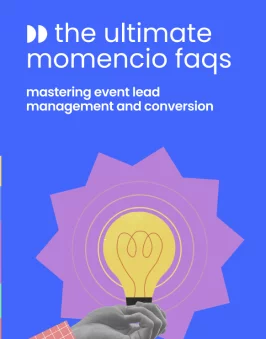
Expert Insights and Common Questions for Congress Engagement
- What are the best practices for preparing for a congress?
- Set Clear Goals: Define specific, measurable objectives for your participation, such as the number of leads to generate or partnerships to secure.
- Research Attendees and Speakers: Understand who will be attending and speaking to identify potential prospects and networking opportunities.
- Plan Your Schedule: Prioritize sessions, workshops, and meetings that align with your goals. Use the congress app or website to create a detailed itinerary.
- Create Engaging Materials: Develop high-quality brochures, business cards, and digital presentations. Include interactive elements like QR codes for personalized engagement.
- How can I effectively engage with attendees on-site?
- Set up a Visually Appealing Booth: To attract attendees, use eye-catching graphics, clear branding, and interactive elements.
- Deliver Interactive Presentations and Demos: Tailor presentations to address the needs of your audience, using storytelling and real-world examples.
- Network Effectively: Engage in genuine conversations, listen actively, and follow up on discussions with personalized messages.
- Utilize Technology: Leverage mobile apps and lead capture tools to streamline interactions and gather valuable data.
- What should I do after the event to follow up with leads?
- Collect and Organize Leads: Consolidate lead information into a CRM system, categorizing and prioritizing them based on engagement and potential.
- Send Personalized Follow-Up Emails: Reference specific interactions from the event, provide valuable resources, and include clear calls to action.
- Leverage Social Media Connections: Connect with leads on platforms like LinkedIn, share relevant content, and engage with their posts.
- Host Post-Event Webinars or Q&A Sessions: Provide additional value by addressing common questions and offering more profound insights into your products or services.
- How do I transition leads to my sales team?
- Integrate CRM Systems: Ensure all lead information is centralized and accessible to both marketing and sales teams.
- Score and Prioritize Leads: Implement a lead scoring system based on engagement and potential value to focus efforts on the most promising prospects.
- Create a Seamless Handover Process: Develop a standardized process that includes detailed lead information, interaction history, and recommended next steps.
- Ensure Consistent Communication: Maintain regular, personalized communication with leads throughout the handover process to keep them engaged.
- What strategies can I use to turn leads into sales?
- Develop Targeted Sales Pitches: Tailor your sales pitches to address the specific pain points and needs of your leads, highlighting the unique value of your solutions.
- Nurture Leads Through the Sales Funnel: Use a combination of content marketing, personalized emails, and one-on-one interactions to build trust and provide ongoing value.
- Track and Analyze Lead Interactions: Use analytics tools to monitor lead engagement and adjust your follow-up strategy based on performance data.
- Close the Deal Effectively: Address any final objections, present a clear and detailed proposal, and follow up promptly to confirm details and begin the onboarding process.
- How can I measure the success of my congress engagement strategies?
- Track KPIs: Measure key performance indicators such as the number of leads generated, engagement levels, and conversion rates.
- Analyze ROI: Calculate the return on investment by comparing the cost of participation against the revenue generated from leads.
- Gather Feedback: Collect feedback from attendees, staff, and partners to identify areas for improvement.
- Review Analytics: Use analytics tools to gain insights into what worked well and what didn’t, and adjust your strategies accordingly for future events.
- What tools can help improve my congress engagement efforts?
- CRM Systems: Platforms like Salesforce or HubSpot for centralized lead management.
- Lead Capture Tools: Mobile apps and badge scanners for efficient lead capture and categorization.
- Event Apps: Official congress apps for scheduling, networking, and staying updated on event activities.
- Email Marketing Software: Tools like Mailchimp or HubSpot for personalized and automated follow-up emails.
- Analytics Platforms: Google Analytics and other tools for tracking engagement and performance metrics.
- How important is follow-up timing in converting leads?
- Immediate Follow-Up: Timely follow-up is crucial. Contacting leads within a few days after the congress significantly increases the chances of engagement.
- Consistent Communication: Maintain regular touchpoints to keep leads warm and engaged. This can include follow-up emails, phone calls, and social media interactions.
- Tailored Approach: Tailor the timing and content of your follow-ups based on the lead’s engagement level and specific interests.
- How can I ensure my sales team is well-prepared to handle leads?
- Provide Comprehensive Lead Information: Ensure the sales team has access to detailed lead profiles, including contact information, interaction history, and engagement metrics.
- Train on Product Knowledge: Conduct regular training sessions to keep the sales team updated on product features, benefits, and common objections.
- Facilitate Communication: Encourage regular meetings between marketing and sales teams to discuss lead handovers, strategies, and any issues that arise.
- Offer Support Resources: Provide sales enablement materials such as pitch decks, case studies, and FAQs to help the sales team effectively engage with leads.
- What are some common mistakes to avoid in Congress engagement?
- Lack of Preparation: Failing to set clear goals, research attendees, or plan your schedule can lead to missed opportunities.
- Poor Booth Design: An uninviting or cluttered booth can deter attendees from engaging with your brand.
- Ineffective Follow-Up: Generic, delayed, or infrequent follow-up communications can cause leads to lose interest.
- Disjointed Handover: A lack of coordination between marketing and sales teams can result in leads falling through the cracks.
- Neglecting Analytics: Ignoring data and feedback can prevent you from improving your strategies and achieving better results in future events.
Interesting Facts from Research
- 41% of marketers believe that events are the most effective marketing channel, surpassing digital advertising, email marketing, and content marketing.
- Personalized follow-up emails can increase response rates by up to 100%.
- Companies that utilize CRM integration see an average sales increase of 29%.
